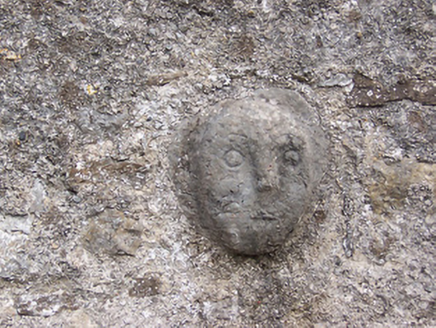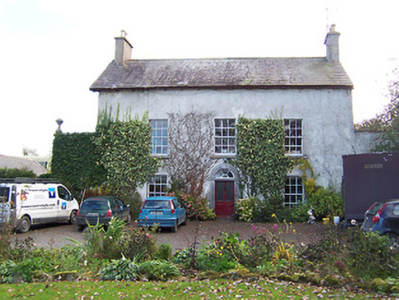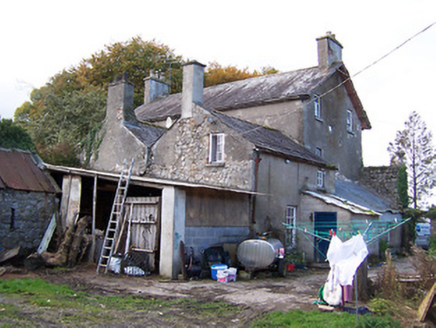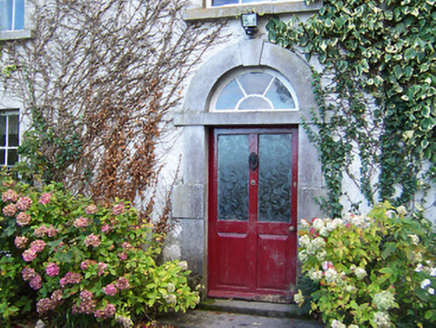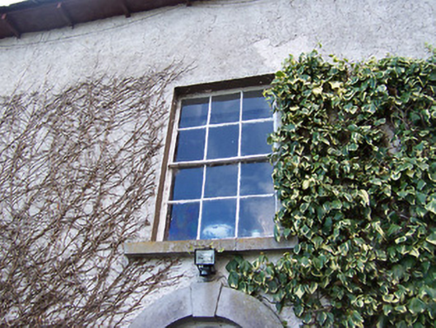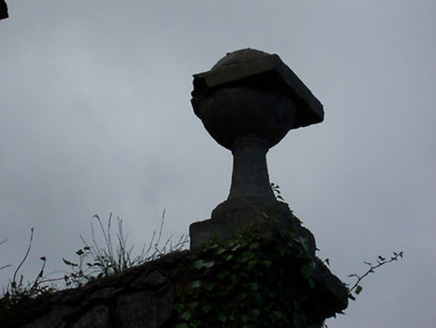Survey Data
Reg No
15401607
Rating
Regional
Categories of Special Interest
Archaeological, Architectural, Artistic
Original Use
House
In Use As
House
Date
1760 - 1840
Coordinates
214888, 252685
Date Recorded
10/10/2004
Date Updated
--/--/--
Description
Detached three-bay two-storey country house, built c.1760, with screen walls to either side (north and south) hiding lean-to single-storey wings to rear (east), having cut limestone coping over and cut limestone ball finials to ends. Three-storey elevation to rear (east) with two two-bay two-storey returns. Possibly incorporating earlier fabric. Re-roofed and altered following damage during the 'Night of the Big Wind' in 1839. Now in use as a private house. Pitched natural slate roof with overhanging bracketed eaves and rendered chimneystacks to either end having clay chimney pots. Cast-iron rainwater goods. Lime rendered walls with evidence of rubble stone walling exposed to rear. Square-headed window openings with cut stone sills having six-over-six pane timber sliding sash windows retaining early, possibly crown glass, c.1838. Central round-headed doorcase with limestone block-and-start surround having glazed timber door with radial fanlight over. Interesting interior with shouldered doorcases and a mid-eighteenth century ramped staircase. House set back from road in extensive grounds with complex of rubble limestone outbuildings to rear (east). Main gates to west.
Appraisal
A significant structure, of two distinct periods, which retains its early character and detailing. This elegant building retains a great deal of its early fabric, including early lime render and glass, which are rare survivors and a fine doorcase. The layout to the rear (east) suggests that this structure may also contain early fabric predating the apparent mid-eighteenth century construction date. The good ranges of outbuildings to the rear and the entrance gates to the west add to the setting and complete this important composition. This building was re-roofed following damage sustained during the 'Night of the Big Wind' on 6th-7th January 1839. This storm probably caused more widespread damage throughout Ireland than any other storm in recorded history. Winds reached hurricane force and it is estimated that between a fifth and a quarter of all houses in Dublin alone had damage ranging from broken windows to complete destruction. A carved stone head, of Medieval appearance, which is built into a wall of one of the outbuildings to the rear was probably taken from the remains of an early church site (associated with St. Finian) located a short distance to the west, adjacent to the main entrance gates to Noughaval House.
